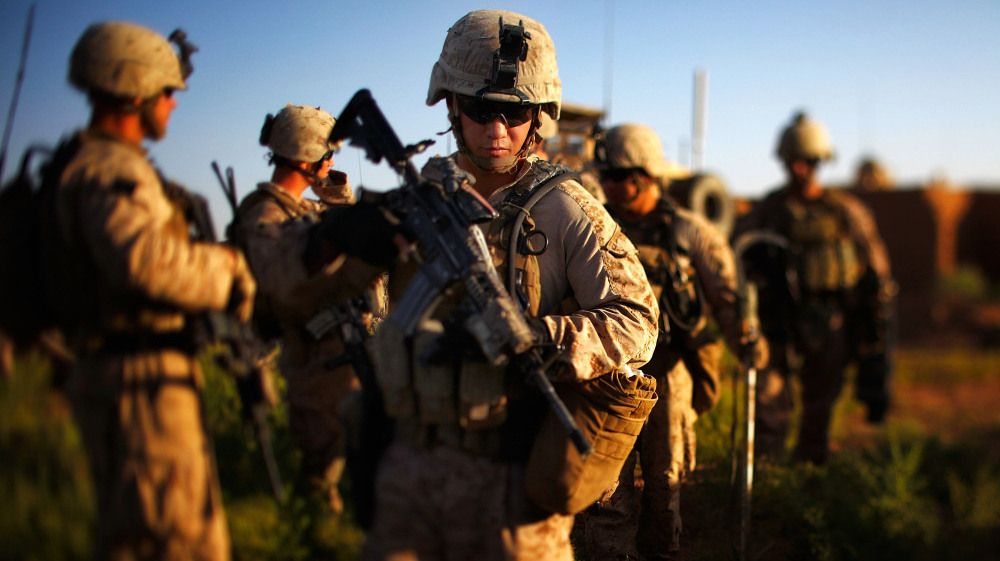A new report confirms a concern defense and military leaders have long recognized: There’s a growing disconnect between Americans and their military.
The report, published last week by the Pew Research Center, notes that a smaller share of Americans currently serve in the armed forces than at any time since the peacetime era between World Wars I and II.
Just one-half of 1 percent of Americans served in uniform at any given time during the past decade — the longest period of sustained conflict in the country’s history — the report says. Meanwhile, as the military shrinks in size, the connections between military members and the broader civilian population “appear to be growing more distant,” the report says.
The report was based on surveys of more than 2,000 civilian adults and almost 1,900 veterans, more than 700 of whom served after 9/11.
Among the respondents, most said they have family members who are serving in the armed forces or have served in the past. However, older Americans were considerably more likely to have close military ties.
More than three-quarters of civilian adults ages 50 and older reported having an immediate family member — a spouse, parent, sibling or child — who served or serves in the military. For many, that service took place before the end of the draft and the introduction of the all-volunteer force in 1973.
Only 57 percent of civilian respondents ages 30 to 49 said they had an immediate family member who served. The percentage dropped to one-third among respondents ages 18 to 29.
The report appears to confirm that for many Americans, military service is a family tradition. Seventy-nine percent of veterans surveyed reported that an immediate family member is serving or has served in the military. That compares to 61 percent among the civilian respondents.
Decisions to serve also appear to be influenced by race, region and political preference, the report showed. Sixty-eight percent of whites, 59 percent of blacks and 30 percent of Hispanic respondents reported having immediate family members who serve or have served in uniform.
Sixty-four percent of Southerners reported immediate family ties to the military. The percentage for those living in the Northeast was 56 percent, and in the West, 57 percent. City dwellers were somewhat less likely than those in the suburbs or rural areas to say a family member served in the military.
Political party also appeared to be an influencing factor. Seventy-three percent of Republicans, 59 percent of Democrats and 56 percent of Independents said an immediate family member served in the military.
The report confirmed perceptions by civilians as well as veterans that the American public doesn’t understand the problems faced by those in the military. Seventy-seven percent of veterans and 71 percent of the general public shared this view.
Retired Navy Adm. Mike Mullen spoke frequently during his tenure as chairman of the Joint Chiefs of Staff about what he called a “worrying disconnect” between civilians and the military.
Speaking earlier this year at the U.S. Military Academy at West Point, N.Y., Mullen expressed concern that civilians don’t fully understand the sacrifices military members make.
“Our work is appreciated, of that I am certain,” he told members of the 2011 graduating class. “But I fear [civilians] do not know us. I fear they do not comprehend the full weight of the burden we carry or the price we pay when we return from battle.”
This is important, Mullen said, “because a people uninformed about what they are asking the military to endure is a people inevitably unable to fully grasp the scope of the responsibilities our Constitution levies upon them.”
Defense Secretary Leon E. Panetta, speaking last month at the Woodrow Wilson Center, called the tiny percentage of Americans who make up the all-volunteer force the most important ingredient of U.S. national defense.
Panetta praised the “men and women who represent less than 1 percent of our nation, but who have shouldered the burden of protecting the American people and who have shown the strength of the American character in their willingness to put their lives on the line to defend our values, our interests and our freedom.”
The secretary emphasized the need for the country to provide them the support they deserve — even in the face of budgetary challenges.
“The 1 percent of the country that has served in uniform, and their families, have borne the heavy costs of war for 10 years,” he said. “They cannot be expected to bear the full costs of fiscal austerity as well.”










